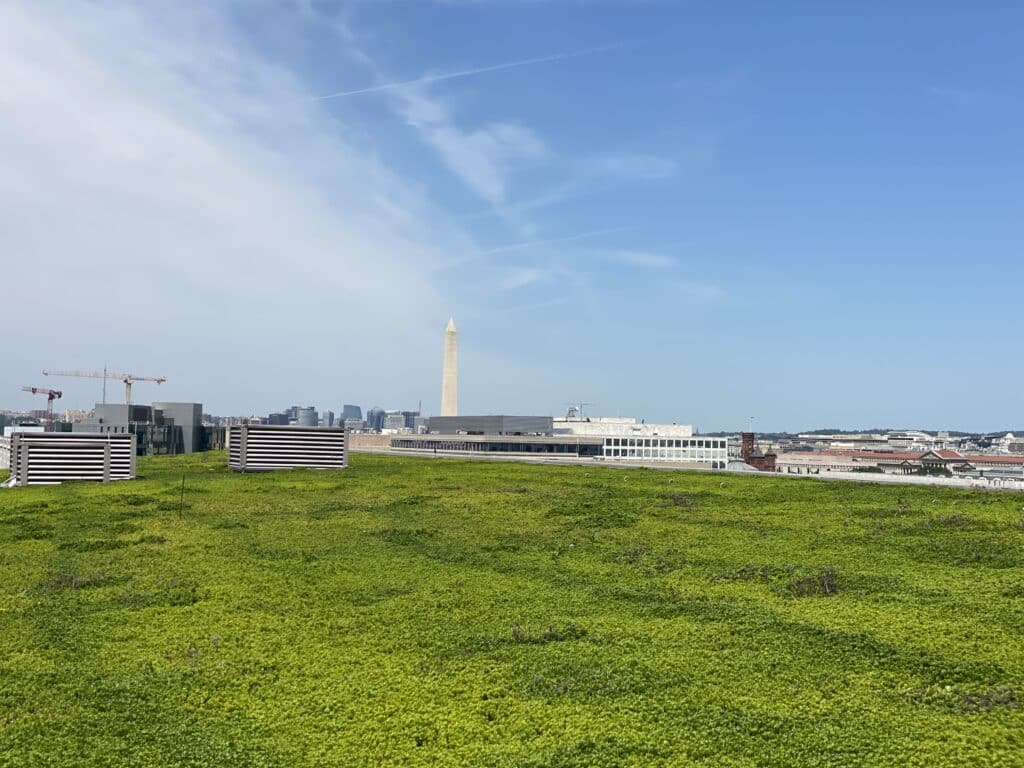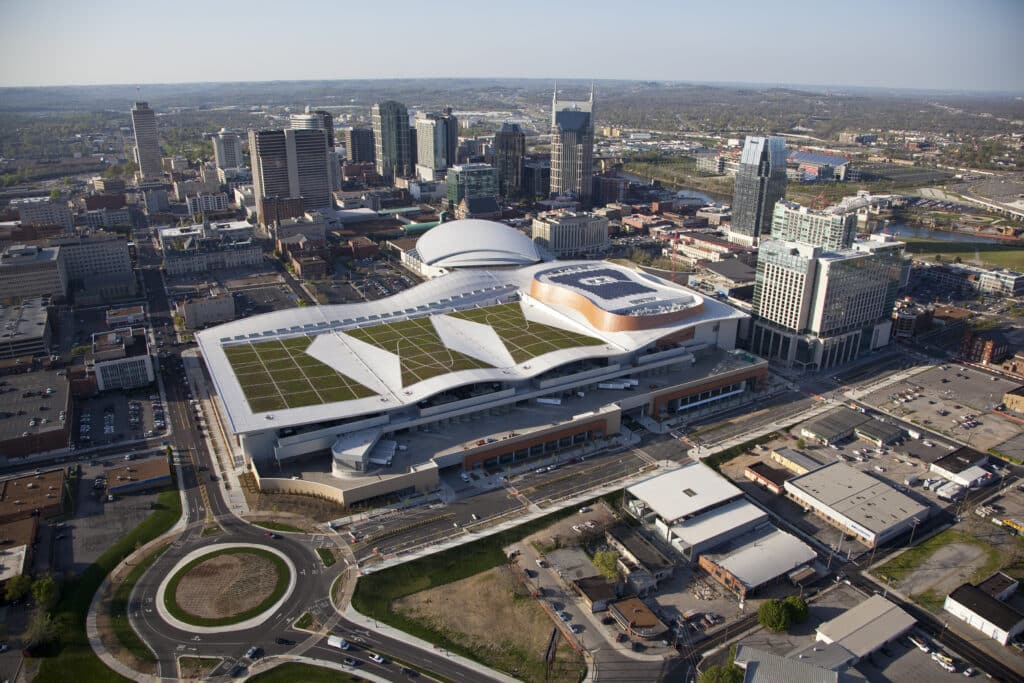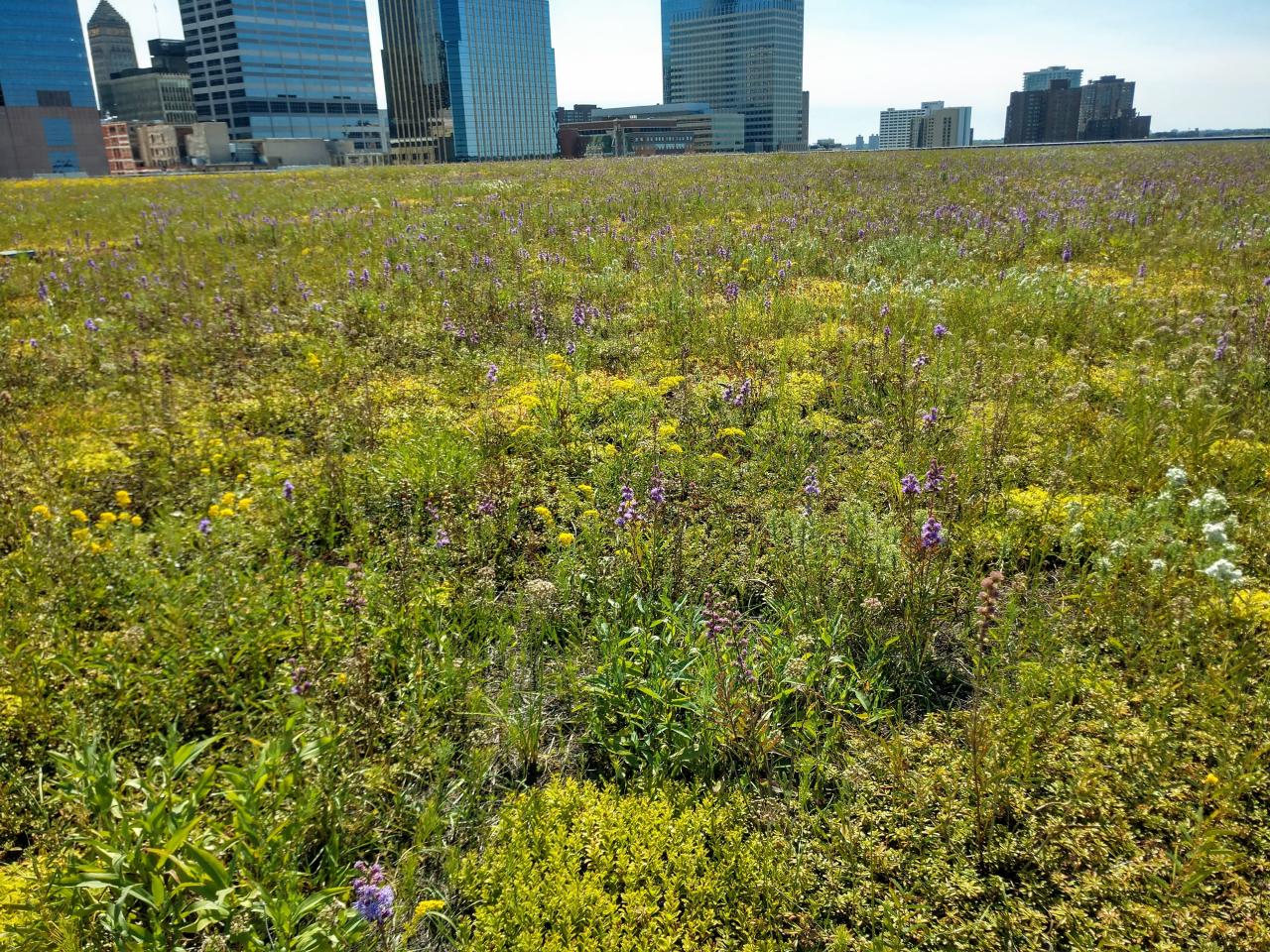
How green roofing works to reduce the heat absorption
Green roofing operates as a natural temperature regulator for urban structures. Traditional roofs, often constructed with heat-absorbing materials like asphalt, can trap heat and exacerbate UHIs. In contrast, green roofs employ a simple yet effective strategy. They cover rooftops with lush vegetation, creating a living shield against excessive heat.
- Insulation: The soil and vegetation on green roofs act as a natural insulator. They prevent the building beneath from absorbing and radiating heat, keeping indoor temperatures more stable.
- Transpiration: Sedums on green roofs release water vapor through a process called transpiration. This cooling effect mimics the cooling properties of trees, further reducing rooftop and surrounding temperatures.
- Evapotranspiration: Green roofs also promote the cooling process of evapotranspiration. This is the combined loss of water through both plant transpiration and direct evaporation from the soil. Evapotranspiration cools the air, creating a refreshing microclimate.
- Shading/cooling: the dense layer of sedum vegetation on green roofs provide shade, reducing the amount of direct sunlight that reaches the roof’s surface. This shading effect alone can significantly curb heat absorption.
- Temperature reduction: green roofs naturally lower temperatures through a combination of shading, insulation and transpiration. Green roofs can reduce the temperatures by 30-40 degrees Fahrenheit.
the cost and return on investment of green roofing
While green roofing may seem like a substantial investment upfront, it offers a remarkable return in the long run.
Initial Costs: The installation of a green roof involves expenses related to materials, labor, and maintenance. However, these costs are steadily decreasing as the popularity of green roofing grows and installation techniques become more efficient.
Return on Investment (ROI): The ROI of green roofs is multifaceted.
- Energy Savings: Green roofs dramatically reduce the need for air conditioning during hot seasons, resulting in lower energy bills. These savings can offset the initial installation costs within a few years.
- Extended Roof Lifespan: Green roofs protect the underlying structure from the harsh effects of weather, UV radiation, and temperature fluctuations. This can double or even triple the lifespan of the roof, saving on replacement and maintenance costs.
- Property Value: A property with a green roof often commands a higher resale value due to its energy efficiency, aesthetic appeal, and environmental benefits.
- Environmental Savings: Green roofs contribute to a healthier urban environment by improving air quality, reducing stormwater runoff, and enhancing biodiversity. These benefits are hard to quantify but have lasting positive impacts on the community and environment.

Advantages of green roofing
Green roofing holds immense promise in enhancing urban environments, offering a range of general benefits that span environmental sustainability, energy efficiency, and community well-being. Let’s delve into these advantages, illuminating how green roofs contribute to a more resilient and sustainable urban landscape.
1. Air Quality Improvement: The vegetation on green roofs acts as a natural filter, capturing airborne pollutants and particulate matter, thus improving air quality and promoting healthier urban environments.
2. Noise Reduction: Green roofs offer excellent noise attenuation properties, minimizing external noise pollution and creating quieter indoor environments.
3. Increased Property Value: The presence of green roofs enhances the marketability and value of buildings, attracting environmentally conscious tenants and investors.
4. Aesthetic Enhancement: Integrating green roofs into urban landscapes enhances visual aesthetics, transforming rooftops into vibrant green spaces, and promoting a sense of well-being and connection with nature.
TYPES OF GREEN ROOFING SYSTEMS
When considering green roofing options, explore various types to find the best fit. Extensive green roofs are lightweight and low-maintenance, ideal for drought-resistant plants like sedums. Intensive roofs support larger plants and even trees, creating lush environments but require more upkeep. Modular systems offer flexibility, quick installation, and instant greening, suitable for retrofitting existing buildings. Green roof remediation revitalizes aging roofs, addressing issues like plant die-off or drainage problems. Consider factors like building structure, climate, and maintenance when choosing a system. With the right choice, transform your rooftop into a sustainable oasis, enhancing both aesthetics and environmental impact.
in conclusion,
Green roofing emerges as a practical and environmentally sound solution to combat the Ubran Heat Island Effect. By reducing heat absorption, offering numerous benefits, and providing a substantial return on investment, green roofing not only helps create cooler, more sustainable cities but also makes financial sense for property owners and developers committed to a greener future.



